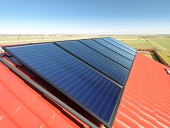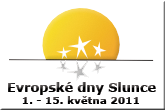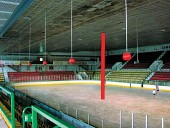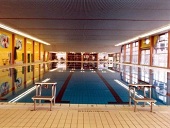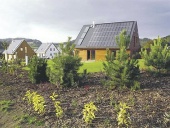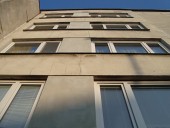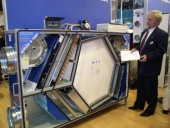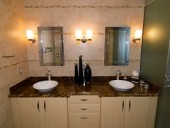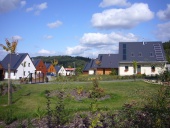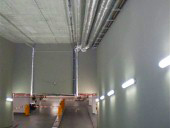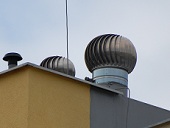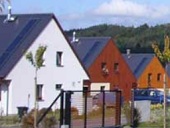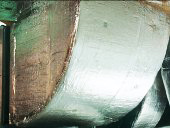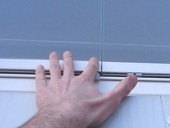Our serial continues with this low-energy house built with sand-lime bricks. This time, the family house is located not far from Liberec, in the foothills of the Jizera mountains. The surroundings, predominantly rural houses near a protected natural area, influenced the shape of the house. Its location responds primarily to the surrounding buildings and the slightly sloping land.
Archiv článků od 29.11.2010 do 23.5.2011
The European Solar Days successfully promote the use of a free unlimited renewable energy source available everywhere to everyone to generate electricity as well as heating and cooling: the SUN.
This campaign raises public awareness and involves several hundred thousand citizens at local level. Pioneer countries such as Austria, Germany, Switzerland, as well as others that successfully embraced this initiative like France, Italy and Spain, are only too keen to share their experience and help spread the word. The European Solar Days are celebrated in an increasing number of countries and in 2010 around 6.600 events were planned in 17 European countries by diverse organisations ranging from solar equipment manufacturers to schools and local authorities.
Article originated from the result of a graduation thesis that had been engaged in the design of air conditioning in a sports hall. An emphasis was insisted on ensuring the optimal microclimatic conditions in the ice stadium in the framework of the solution. In particular, it related of places affected by the ice surface with respect to the generation of mist and condensation of humidity at construction structures as well as ensuring a necessary comfort for spectators in the area of stands and terraces.
Low energy (LEB) and passive buildings (PB) are becoming standard for new constructions in EU countries. They aren't experiments anymore, but absolutely ordinary mass production of sophisticated residential buildings. Only in Germany, Austria and Switzerland there are already thousands of buildings that meet the passive standard and their number doubles every year. The cost of passive buildings is only 5-7 % higher than those of conventional ones, and yet, their consumption of energy and heating is up to 90 % lower! Part 4 about circulation system air heating system with a controlled proportion of ventilation air and heat recovery, and some design principles for design and ventilation NED EPD.
Low energy (LEB) and passive buildings (PB) are becoming standard for new constructions in EU countries. They aren't experiments anymore, but absolutely ordinary mass production of sophisticated residential buildings. Only in Germany, Austria and Switzerland there are already thousands of buildings that meet the passive standard and their number doubles every year. The cost of passive buildings is only 5-7 % higher than those of conventional ones, and yet, their consumption of energy and heating is up to 90 % lower! Part 3 about ventilation systems for normal buildinghs and EPD.
The current market is over saturated with different technologies and products that promise to rocket return, versatile use and effect for everyone. As it is the truth is a complicated thing and this article does not even look for it. Each technology certainly has its place, but if the specifications is thoroughly examined. The aim is (on a simple example) to compare seemingly incomparable. Custom effect of insulation of the facade versus applications of controlled ventilation with heat recuperation in classic family house.
Low energy (LEB) and passive buildings (PB) are becoming standard for new constructions in EU countries. They aren't experiments anymore, but absolutely ordinary mass production of sophisticated residential buildings. Only in Germany, Austria and Switzerland there are already thousands of buildings that meet the passive standard and their number doubles every year. The cost of passive buildings is only 5-7 % higher than those of conventional ones, and yet, their consumption of energy and heating is up to 90 % lower! Part 2. about regulation ventilation system.
Low energy (LEB) and passive buildings (PB) are becoming standard for new constructions in EU countries. They aren't experiments anymore, but absolutely ordinary mass production of sophisticated residential buildings. Only in Germany, Austria and Switzerland there are already thousands of buildings that meet the passive standard and their number doubles every year. The cost of passive buildings is only 5-7 % higher than those of conventional ones, and yet, their consumption of energy and heating is up to 90 % lower!
The Author engages in his article in the technical and normative conditions with respect to fire-stopping insulations for ducts, which unfortunately are not enough known and experienced in practice. He synoptically and understandably introduces the principles and rules of the said problems and describes important design details, as well. Certain critical places fire-stopping insulation systems and their assemblies are correctly emphasized.
Author raises discussion and proposed changes in the rules of the energy audit. Draws attention to the criteria for evaluating alternatives and to small requirements for variability solutions. Read controversy of the author and reviewer who considers the methodology as sufficient and sees a problem in processing audits.
The group of twelve residential passive houses and school facilities in Koberovy can be characterised as the first mass project of experimental construction based on energy efficient wooden structures carried out in the Czech Republic. The construction is located on a plot of land oriented to the South. The concept respects the regulations for the protected area Czech Paradise within urban communities, which require saddle roof, entrance through the longer part of the façade, limited glazing areas, among others. The concept does not result in a monotonous terraced construction. The new housing estate is logically related to the current character of the surrounding buildings in the village.
The Author engages in his article in the technical and normative conditions with respect to fire-stopping insulations for ducts, which unfortunately are not enough known and experienced in practice. He synoptically and understandably introduces the principles and rules of the said problems and describes important design details, as well. Certain critical places fire-stopping insulation systems and their assemblies are correctly emphasized.
Additional glazing of a loggia in a prefabricated house can significantly affect the energy performance and internal air quality of individual flats. The effects of glazing are not entirely explicit and they depend on the specific solution of the construction, original thermal characteristics of the building as well as on the way the building is used and on the behaviour of its users. The mentioned study analyses several cases of glazed loggias using detailed simulation method (software IES
The directive 2010/31/EU on the Energy Performance of Buildings – called EPB, EPBD II or EPBD Recast – was passed last May. EU member countries are obliged to implement these new requirements into their national legislations. The implementation of 2010/31/EU was addressed by a number of seminars during the recent Aqua-therm 2010 trade fair. The following article presents you with the most important facts from the presentations and with links to information that was published before and during Aqua-Therm 2010.
zpět na aktuální články

